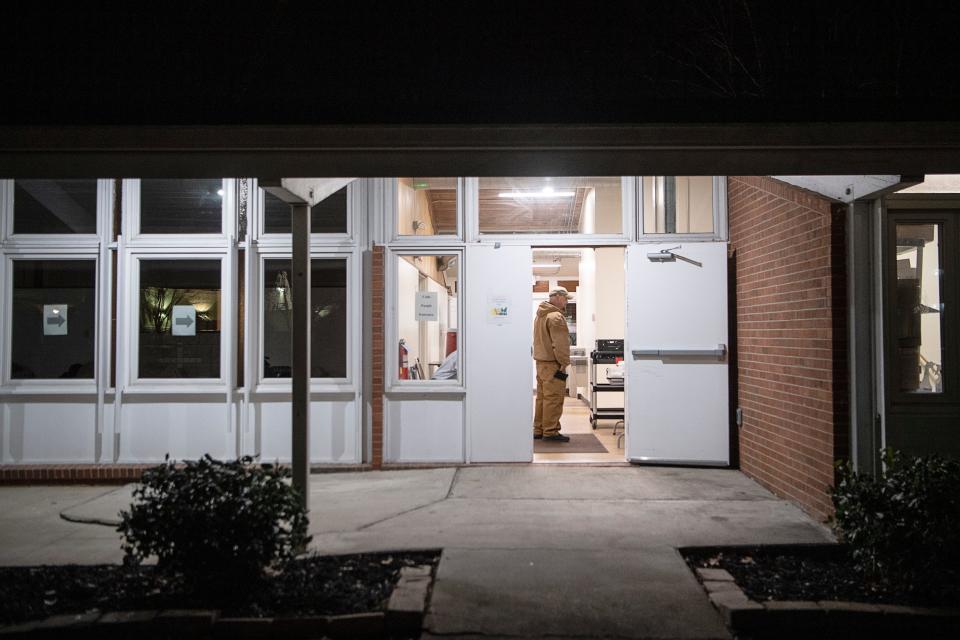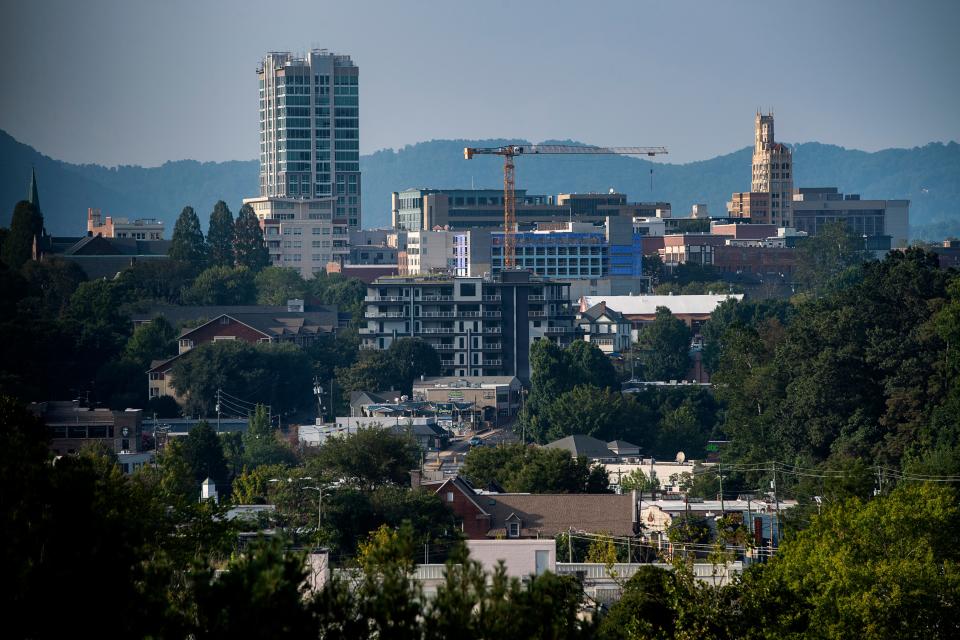What to know: How can you find emergency homeless shelter on freezing nights in Asheville?
ASHEVILLE - Code Purple season begins Oct. 15, a longstanding community initiative that activates emergency shelter beds when temperatures drop below freezing.
This year features three key improvements, said Emily Ball, the city's Homeless Strategy Division manager: additional beds, expanded criteria and a dedicated phone line, which will confirm if Code Purple is operational on any given night and provide information about shelter locations.
“Overall, I think we’ve got a really great plan," Ball said during the Oct. 12 Homeless Initiative Advisory Committee meeting. "We’ve got a lot of capacity, we’ve got really great partners in Code Purple this year, and we are just three days away from Code Purple being available.”
Ball said the city is heading into this winter with more available beds than years before. Between ABCCM and Salvation Army, 91 shelter beds will be activated when Code Purple is called, with additional flex capacity during "very extreme weather" or emergency situations.
Unlike years prior, the process no longer only triggers when temperatures fall below 32 degrees, but will also be available when temps measure at 33-40 degrees with precipitation. The season will last through April 30.
What do you need to know about Code Purple?
Background: Code Purple began in 2009 to provide overflow emergency shelter with fewer requirements during extremely cold weather.
Who decides when Code Purple is called? Leaders of the Asheville-Buncombe Homeless Coalition, a volunteer coalition of area service providers and stakeholders, call Code Purple nights based on the forecast posted by www.weather.gov, 48 hours in advance.
How can you find out if it is a Code Purple night? The Homeless Coalition will email its distribution list. Based on those email notifications, the city and county will publicize via their websites, the Harrah's Cherokee Center marquee and the county’s text alert system. To be added to the Homeless Coalition distribution list, email bcnc.homeless.coalition@gmail.com.
A recorded message on the new phone line will also be available at 828-398-6011.
Code Purple Procedure Manual 2023-2024: https://bit.ly/46N915q.

Where can you find shelter during Code Purple?
ABCCM's Veterans Restoration Quarters
Location: 1329 Tunnel Road.
Number: 828-259-5333.
Population: Single men.
How many beds? 50.
Intake hours: 4-8 p.m. Exit by 7:30 a.m.
Transit Route: WE2; 170.
ABCCM's Transformation Village
Location: 30 Olin Haven Way.
Number: 828-259-5365.
Population: Single women and women with children.
How many beds? 25.
Intake hours: 4-8 p.m. Exit by 7:30 a.m.
Transit Route: W2.
Salvation Army
Location: 204 Haywood St.
Number: 828-253-4723.
Population: Single men.
How many beds? 16.
Intake hours: 5-8 p.m. Exit by 7:30 a.m.
Transit Route: N3; N4.
Families will be triaged on a case by case basis and may be offered hotel options if no other shelters are available. People using wheelchairs can be accommodated at any site but will have easiest facility navigation at ABCCM sites.
ABCCM will provide shuttle service with pickups at its Crisis Ministry (24 Cumberland Ave.) at 4 p.m. Bus transit through Asheville Rides Transit is free to Code Purple sites at night and from Code Purple sites to downtown the following morning.

'The need is there'
Asheville finds itself in the midst of an ongoing homelessness crisis, exacerbated by the pandemic and climbing housing costs, and while overall numbers trended down this year, unsheltered counts remain higher than pre-pandemic figures, with 171 people experiencing unsheltered homelessness in Buncombe County, according to the January 2023 point in time count, an annual single night tally.
That's down 26% from the year before, but 163% higher than before the pandemic.
Jaime Benshoff, a HIAC member who has herself experienced homelessness in Asheville, said on her way to the day's meeting by bus, she encountered a woman who had spent the night before at the bus stop, at a loss for where else to go.
“Even with all my information," Benshoff said, every solution or shelter she named, the woman had already tried. "The only thing I could think of to do at that time of morning was to exchange phone numbers in case something did come up. But it was just a deep reminder that the need is there."
Code Purple is intended to be the most inclusive shelter option available, with no one turned away. Sobriety and identification are not required for entry, factors which often act as a barrier for those seeking immediate shelter.
The initiative is funded in part by $100,000 budgeted by the city of Asheville and Buncombe County, $50,000 each, which HIAC voted unanimously to allocate to ABCCM. Final approval of the funds falls to Asheville City Council Oct. 24.
The city and county also recently authorized $875,000 each, a total of $1.75 million, to fund new and existing beds at area shelters, including Salvation Army's 16 Code Purple beds. Salvation Army, historically a Code Purple location, was unable to provide shelter during 2022's season due to staffing shortages.
Get involved
In January, Asheville and Buncombe County held a joint meeting to hear a long-awaited report from the National Alliance to End Homelessness, which offered 30 multiprong recommendations to reduce the number of unsheltered homelessness by half.
Work has continued since then, much of it led by HIAC, the governance board for the Asheville-Buncombe Continuum of Care, responsible for creating, implementing and evaluating policies and strategies and steering federal resource allocation.
This includes an ongoing effort to pursue a new, high-access homeless shelter and a complete restructuring of the area's CoC, bringing it out from under the city and county, one of the Alliance's highest priority recommendations. A draft charter was endorsed by HIAC on Oct. 10.
A second joint work session is schedule for Nov. 16 in the Harrah's Cherokee Center from 9-noon. It will serve as a follow-up to the January meeting, focusing on HIAC's progress implementing the Alliance's recommendations, updates on key projects and next steps.
More: Asheville, Buncombe homelessness board will pursue new, high-access shelter
More: Asheville residents allege ADA noncompliance of downtown parking deck; How bad is it?
Sarah Honosky is the city government reporter for the Asheville Citizen Times, part of the USA TODAY Network. News Tips? Email shonosky@citizentimes.com or message on Twitter at @slhonosky. Please support local, daily journalism with a subscription to the Citizen Times.
This article originally appeared on Asheville Citizen Times: What to know: When temps drop in Asheville, where are shelter beds?

